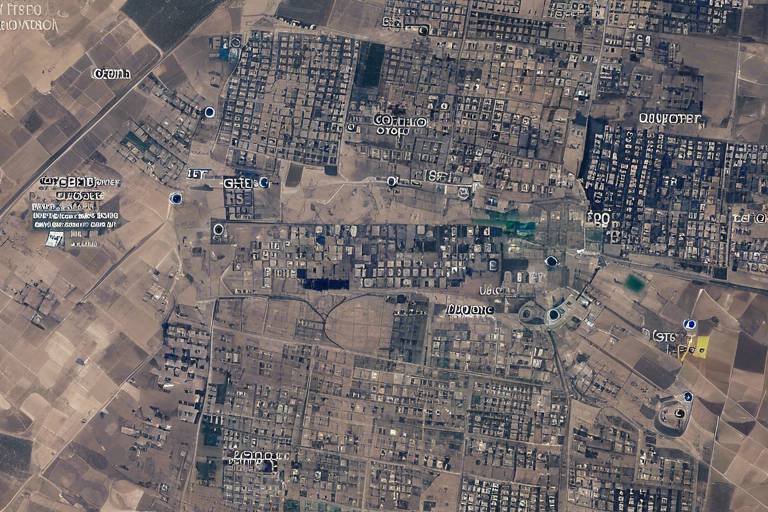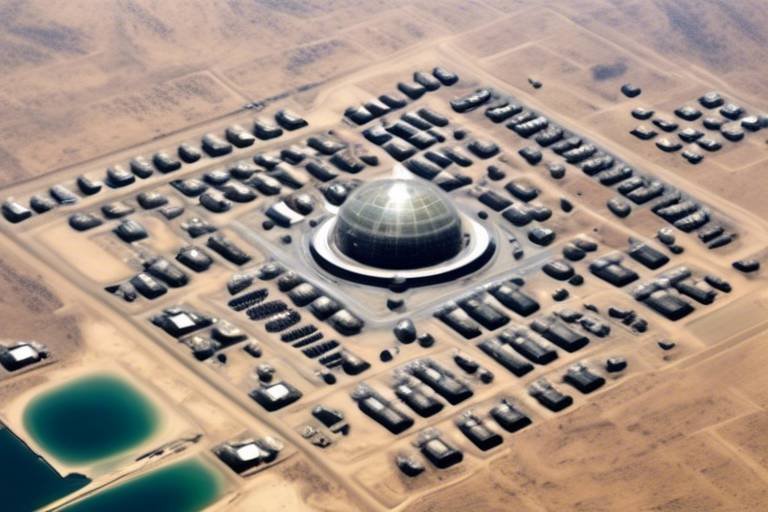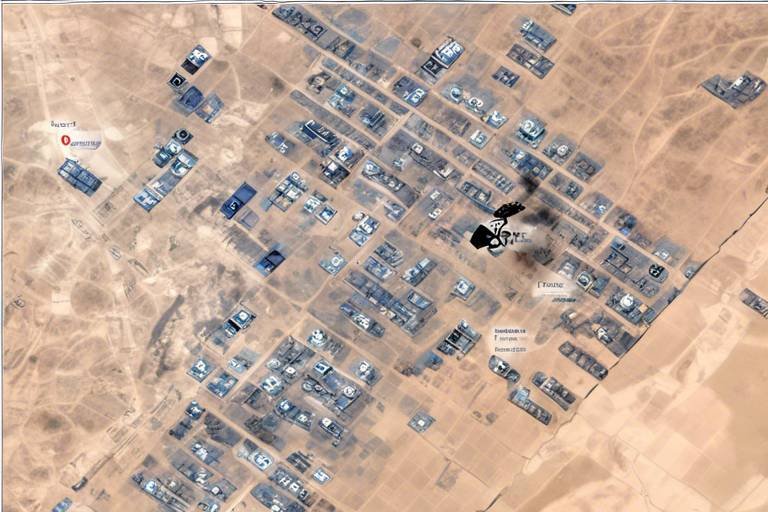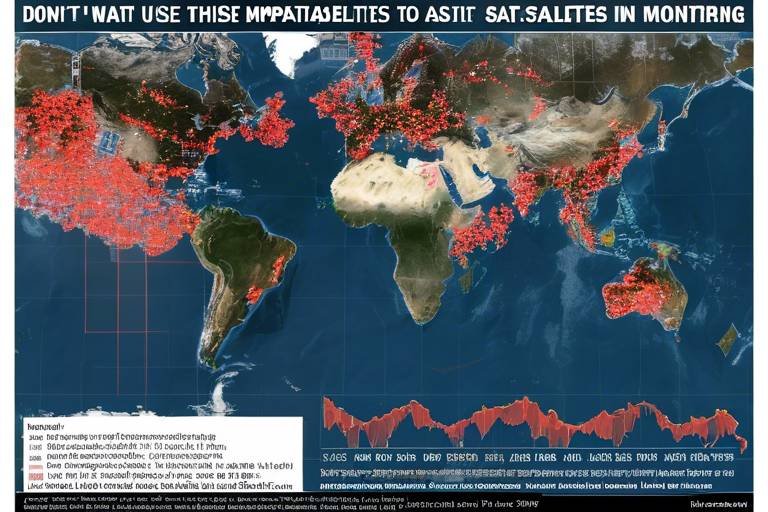The Future of Space-Based Defense Technologies
The landscape of global defense is undergoing a profound transformation, driven by the rapid advancements in space-based technologies. As we stand on the brink of a new era, the possibilities seem limitless. Imagine a world where satellites not only provide communication but also serve as vigilant guardians, monitoring threats from above. This article explores the emerging technologies in space-based defense, their implications for global security, and the challenges ahead in implementing these advanced systems.
Innovations such as satellite systems, space drones, and laser weapons are revolutionizing defense strategies. These technologies are not just concepts; they are becoming integral components of military operations. For instance, satellite systems have evolved from simple communication tools to complex networks capable of real-time surveillance and reconnaissance. Space drones, on the other hand, are set to redefine aerial warfare, providing unprecedented flexibility and reach. Laser weapons, with their pinpoint accuracy and speed of light delivery, represent a new frontier in weaponry that could change the dynamics of engagement.
The rise of space-based defense technologies poses significant implications for global security. As nations invest heavily in these advancements, the balance of power could shift dramatically. The potential for space militarization raises questions about how international relations will evolve. Will we see a new arms race in orbit? How will countries navigate the complexities of defense strategies that now extend beyond terrestrial boundaries? These are pressing questions that demand our attention as we move forward.
As nations invest in space defense, geopolitical tensions may escalate. Competition in space could lead to conflicts that mirror historical terrestrial rivalries. For example, countries may vie for control over strategic orbits or the resources found on celestial bodies. This section explores potential conflicts arising from these competitive dynamics and emphasizes the urgent need for diplomatic solutions to prevent a new frontier of warfare.
The necessity for new treaties and regulations to govern space-based defense technologies is critical. Existing frameworks, such as the Outer Space Treaty, provide a foundation, but they are often outdated in the face of rapid technological advancement. The potential for future agreements must ensure responsible use and prevent the weaponization of space. A collaborative approach could foster a safer environment where nations can coexist peacefully while pursuing their defense interests.
Collaboration between nations can enhance space defense capabilities. Initiatives like the European Space Agency's joint projects and the U.S. Space Force's partnerships with allied nations highlight the importance of working together to address shared security challenges in space. By pooling resources and expertise, countries can create a more robust defense posture against potential threats.
Implementing advanced space-based defense systems comes with its share of challenges. System integration is a complex task that requires seamless communication between various technological components. Additionally, cybersecurity remains a significant concern, as the vulnerabilities of space systems could be exploited by hostile actors. Furthermore, there is a pressing need for robust infrastructure to support these advanced technologies, ensuring they are operationally effective and secure.
The deployment of space-based defense technologies raises profound ethical questions. As we venture into the cosmos, the moral implications of militarizing space cannot be ignored. Nations must grapple with their responsibilities in ensuring peace and security, not just for themselves but for the global community. The stakes are high, and the choices made today will shape the future of international relations.
Public perception plays a crucial role in shaping defense policies. As awareness of space defense technologies grows, so too does the influence of public opinion on government actions. Engaging with the public about the realities and myths surrounding space defense is essential. Open dialogue can lead to informed decision-making and foster a sense of shared responsibility among citizens and leaders alike.
Ongoing research is vital for the advancement of space-based defense. Key areas for future study include:
- Innovative technologies that enhance operational capabilities.
- Strategic frameworks for effective implementation of defense systems.
- Interdisciplinary approaches that combine technology with ethical considerations.
As we explore these avenues, collaboration between academia, industry, and governments will be crucial in shaping the future of space defense.
Q: What are space-based defense technologies?
A: Space-based defense technologies include systems like satellites, space drones, and advanced weaponry designed to protect national interests and enhance military capabilities from space.
Q: How do these technologies impact global security?
A: The emergence of space-based defense technologies can shift the balance of power among nations, potentially leading to an arms race and altering international relations.
Q: Are there ethical concerns related to militarizing space?
A: Yes, the militarization of space raises significant ethical questions about responsibility, peace, and the potential for conflict among nations.
Q: What role does public perception play in space defense policies?
A: Public perception influences government actions and policies regarding space defense, making it crucial for leaders to engage with citizens about these technologies.
Emerging Technologies in Space Defense
In the ever-evolving landscape of military strategy, emerging technologies in space defense are paving the way for a new era of security and operational effectiveness. Imagine a world where satellites not only orbit the Earth but also serve as vigilant guardians, constantly monitoring potential threats. Innovations such as advanced satellite systems, space drones, and laser weapons are not just concepts from science fiction; they are becoming integral components of modern defense strategies.
One of the most significant advancements is the development of satellite systems that can provide real-time intelligence and surveillance. These satellites are equipped with cutting-edge sensors and communication technologies, allowing military forces to gather critical data from space. The ability to monitor enemy movements and assess potential risks from above offers a strategic advantage that was previously unimaginable. Moreover, the integration of artificial intelligence (AI) into these systems enhances their capabilities, enabling them to process vast amounts of information quickly and accurately.
Alongside satellite technology, space drones are emerging as game-changers in the realm of defense. These unmanned aerial vehicles (UAVs) are designed to operate in the harsh environment of space, conducting reconnaissance missions and even engaging in combat operations. The flexibility and adaptability of space drones allow for rapid response to threats, making them invaluable assets in any military arsenal. Imagine deploying a fleet of drones that can autonomously navigate through space, gather intelligence, and relay critical information back to command centers on Earth.
Another revolutionary technology making waves in space defense is laser weapons. These high-energy systems have the potential to intercept and destroy incoming missiles or hostile satellites with pinpoint accuracy. The idea of using lasers as a defense mechanism might sound like something out of a futuristic movie, but the reality is that these systems are being tested and developed right now. The ability to neutralize threats before they reach their targets is a game-changer, providing nations with a powerful tool to protect their interests in space.
As we explore these advancements, it's essential to recognize that they come with their own set of challenges. The integration of these technologies into existing defense frameworks requires significant investment and collaboration among nations. Additionally, the potential for cybersecurity threats looms large, as these systems are vulnerable to hacking and other forms of interference. Therefore, while the future of space-based defense looks promising, it is crucial to navigate the complexities that come with it.
In summary, the emergence of advanced satellite systems, space drones, and laser weapons is revolutionizing the way nations approach defense. These technologies not only enhance operational capabilities but also fundamentally change the dynamics of global security. As we stand on the brink of this new frontier, the implications for military strategy and international relations are profound. The question remains: how will nations adapt to and regulate these powerful tools in the quest for security and stability in an increasingly competitive space environment?
Global Security Implications
The rise of space-based defense technologies is not just a technological phenomenon; it represents a seismic shift in the landscape of global security. As nations around the world invest heavily in these advanced systems, the implications for international relations and military strategies are profound. Imagine a world where satellites not only provide communication and weather data but also serve as platforms for advanced weaponry and surveillance. This transformation could redefine how conflicts are fought and how nations interact with one another.
One of the most pressing concerns is the potential for a new arms race in space. As countries like the United States, China, and Russia ramp up their capabilities, the competition for dominance in space could lead to heightened geopolitical tensions. The idea of space as a new frontier for military engagement raises questions about the balance of power. Will nations prioritize defensive measures, or will they seek to establish offensive capabilities that could threaten global stability? The answer to this question could determine the future of international peace.
Furthermore, the implications extend beyond mere military strategy. The deployment of space-based defense technologies could significantly alter diplomatic relations. Nations may find themselves forming new alliances based on shared interests in space security, or conversely, they might become adversaries in a struggle for supremacy. For instance, countries that feel threatened by the advancements of others may choose to bolster their own defenses, leading to a cycle of distrust and escalation. The diplomatic landscape could become increasingly complex as nations navigate these new realities.
To better understand these implications, consider the following potential outcomes:
- Increased Military Spending: Countries may allocate more resources to develop and maintain space defense systems, diverting funds from other critical areas such as education and healthcare.
- New Alliances: Nations may band together to create coalitions focused on space security, potentially leading to a new framework of international relations.
- Cybersecurity Risks: As space systems become more integral to national security, they may also become prime targets for cyberattacks, further complicating the security landscape.
In summary, the implications of space-based defense technologies for global security are vast and multifaceted. As nations continue to explore and expand their capabilities, the need for thoughtful dialogue and cooperation becomes more critical than ever. The question remains: how will the international community respond to these challenges? The future of global security may very well depend on our ability to navigate the complexities of this new era in space.
Geopolitical Tensions
The rapid advancement of space-based defense technologies is not just a technological marvel; it’s a potential powder keg for across the globe. As nations invest heavily in these cutting-edge systems, the competitive landscape of international relations is shifting dramatically. Imagine a chess game, but instead of pieces on a board, we have satellites and drones orbiting the Earth, each move potentially escalating into a conflict. Countries are not just racing to develop these technologies; they are also keenly aware of how their advancements could tip the balance of power.
For instance, the United States, China, and Russia are leading the charge in this cosmic arms race, each aiming to establish dominance in the final frontier. The stakes are high, and the implications of this competition are profound. As these nations enhance their capabilities in space, it raises critical questions: What happens when one nation perceives another's advancements as a direct threat? How do we prevent misunderstandings that could lead to conflict? The potential for miscommunication is immense, especially when military operations are conducted in an environment as complex as space.
In this context, the concept of space security becomes paramount. Countries are increasingly viewing space not just as a venue for exploration but as a strategic domain where military and economic interests intersect. To illustrate this, consider the following table that outlines the current space capabilities of major players:
| Country | Key Space Defense Technologies | Current Initiatives |
|---|---|---|
| United States | Satellite constellations, anti-satellite weapons | Space Force establishment, Artemis program |
| China | Space drones, advanced reconnaissance satellites | Tiangong space station, BeiDou navigation |
| Russia | Satellite jamming technologies, missile defense systems | Vanguard hypersonic missile, GLONASS |
This table highlights not only the advancements in technology but also the strategic initiatives that each country is undertaking. As nations bolster their space capabilities, the potential for miscalculations increases. A simple satellite maneuver could be interpreted as a hostile act, leading to a series of retaliatory measures that escalate tensions. Thus, the need for clear communication and established norms in space becomes more critical than ever.
Moreover, as countries vie for supremacy in space, the importance of diplomacy cannot be overstated. Engaging in open dialogues and creating frameworks for cooperation could mitigate the risks associated with this new frontier of military strategy. It’s essential to foster an environment where nations can discuss their intentions and capabilities transparently, reducing the likelihood of misunderstandings that could spiral into conflict.
Ultimately, as we stand on the brink of a new era in defense technologies, the world must grapple with the reality that space is no longer the final frontier of exploration alone; it is also a battleground for geopolitical competition. The question remains: can we navigate these turbulent waters without tipping into chaos? Only time will tell, but proactive measures in diplomacy and international cooperation are critical to ensuring that the cosmos remains a realm of peace rather than conflict.
International Treaties and Regulations
The advent of space-based defense technologies has ushered in a new era of military strategy, but with this innovation comes a pressing need for comprehensive . As nations continue to develop and deploy advanced systems, the absence of clear guidelines could lead to an arms race in space, reminiscent of the Cold War dynamics on Earth. The challenge lies in balancing national security interests with global peace and stability.
Currently, there are several existing frameworks aimed at regulating activities in outer space. The most notable among these is the Outer Space Treaty of 1967, which establishes that space shall be used for peaceful purposes and prohibits the placement of nuclear weapons in orbit. However, as technology evolves, this treaty faces scrutiny regarding its adequacy in addressing modern challenges. For instance, the treaty does not explicitly cover the deployment of advanced weaponry such as laser systems or anti-satellite weapons, which have become focal points in contemporary defense strategies.
To navigate this complex landscape, nations must engage in diplomatic dialogues to forge new agreements that reflect the current realities of space defense. The establishment of a Global Space Governance Framework could serve as a foundational step. This framework should encompass:
- Clear Definitions: Establishing what constitutes offensive and defensive systems in space.
- Verification Mechanisms: Implementing systems to ensure compliance with treaties.
- Conflict Resolution Protocols: Creating processes for addressing disputes arising from space activities.
Moreover, the role of international organizations, such as the United Nations Office for Outer Space Affairs (UNOOSA), is crucial in facilitating these discussions. By promoting transparency and cooperation, these organizations can help mitigate the risks associated with space militarization and foster a collaborative approach to security.
In conclusion, the need for updated international treaties and regulations is critical as we stand on the brink of a new frontier in defense technology. Without proactive measures, the potential for conflict in space could escalate, jeopardizing not only national security but also the safety of our planet. The time for nations to come together and craft a responsible framework for the future of space defense is now.
Q1: What is the Outer Space Treaty?
A1: The Outer Space Treaty, established in 1967, is a foundational agreement that outlines the principles for the peaceful use of outer space and prohibits the placement of nuclear weapons in space.
Q2: Why are new treaties needed for space defense?
A2: As technologies evolve, existing treaties may not adequately address the complexities of modern space defense systems, leading to potential conflicts and an arms race in space.
Q3: How can nations collaborate on space defense?
A3: Nations can collaborate by engaging in diplomatic dialogues, establishing joint defense initiatives, and creating a Global Space Governance Framework to ensure responsible use of space technologies.
Collaborative Defense Initiatives
In the rapidly evolving landscape of space-based defense, collaboration between nations is not just beneficial; it's essential. As the threats in space become more complex and multifaceted, countries are recognizing that a united front can enhance their defense capabilities significantly. By pooling resources, sharing intelligence, and developing joint technologies, nations can create a more robust defense framework that addresses shared security challenges.
One notable example of successful collaboration is the partnership between the United States and its NATO allies. These nations have been working together to develop advanced satellite systems that can detect and respond to potential threats in real-time. This collaboration not only strengthens their individual capabilities but also fosters trust and cooperation among member states, which is crucial in today’s geopolitical climate.
Furthermore, initiatives like the European Space Agency's (ESA) Space Surveillance and Tracking (SST) program exemplify how countries can work together to monitor space debris and other potential hazards. By sharing data and resources, participating nations can enhance their situational awareness and mitigate risks associated with space operations.
The benefits of such collaborative efforts extend beyond just military applications. They also promote scientific research and technological innovation. For instance, joint ventures in developing space-based sensors or communication systems can lead to breakthroughs that enhance both defense and civilian applications, such as disaster response and environmental monitoring.
However, collaboration in space defense is not without its challenges. Different countries often have varying priorities, technological capabilities, and regulatory frameworks, which can complicate joint initiatives. To overcome these hurdles, nations must engage in transparent dialogue and establish clear objectives that align with their collective security interests.
In conclusion, as we venture further into the cosmos, the importance of collaborative defense initiatives cannot be overstated. By working together, nations can not only strengthen their defense systems but also pave the way for a more secure and peaceful space environment. The future of space-based defense will likely depend on these partnerships, making them a critical component of global security strategies.
- What are collaborative defense initiatives? Collaborative defense initiatives refer to joint efforts by multiple nations to enhance their defense capabilities through sharing resources, technology, and intelligence.
- Why are these initiatives important? They are crucial for addressing shared security challenges, fostering trust among nations, and promoting technological innovation in defense.
- Can you provide an example of a successful initiative? Yes, the partnership between the United States and NATO allies to develop advanced satellite systems is a prime example.
- What challenges do nations face in collaboration? Different priorities, technological capabilities, and regulatory frameworks can complicate joint efforts.
- How can these challenges be overcome? Through transparent dialogue and establishing clear objectives that align with collective security interests.
Technological Challenges
As we stand on the brink of a new era in space-based defense technologies, we must confront a myriad of that could impede progress. These challenges are not just technical hurdles; they encompass a range of issues that affect the very foundation of how we approach military operations in space. One of the most pressing concerns is system integration. With various nations developing their own unique systems, the ability to integrate these technologies seamlessly is crucial. Imagine trying to connect a puzzle where each piece is from a different set—frustrating, right? That's the reality we face in creating a cohesive defense network.
Another significant challenge is cybersecurity. As we deploy more sophisticated technologies, the risk of cyber-attacks increases exponentially. Space systems are particularly vulnerable due to their reliance on complex software and satellite communications. A successful cyber-attack could not only compromise sensitive military data but could also disable critical defense systems. This brings us to the need for robust infrastructure. Building and maintaining this infrastructure in space is no small feat. We need to ensure that our satellites and other equipment are not only advanced but also resilient against potential threats.
Moreover, the issue of cost cannot be overlooked. Developing and deploying advanced space-based defense technologies requires significant financial investment. Governments must prioritize funding for these projects while balancing other pressing needs. This financial strain could lead to delays in research and development, ultimately hindering our ability to respond to emerging threats effectively.
To illustrate these challenges more clearly, consider the following table that outlines some of the key technological hurdles we face:
| Challenge | Description |
|---|---|
| System Integration | Difficulty in connecting different defense systems developed by various nations. |
| Cybersecurity | Increased vulnerability to cyber-attacks targeting military space systems. |
| Infrastructure | The need for resilient and reliable support systems in space. |
| Cost | Significant financial investment required for development and deployment. |
In conclusion, while the potential for space-based defense technologies is immense, we must navigate these challenges carefully. The road ahead is fraught with obstacles, but with strategic planning and international cooperation, we can overcome these hurdles and pave the way for a secure and stable future in space.
- What are the main technological challenges in space-based defense? The main challenges include system integration, cybersecurity, infrastructure resilience, and funding.
- How does cybersecurity affect space defense? Cybersecurity vulnerabilities can lead to potential breaches that compromise military operations and sensitive data.
- Why is system integration important? Effective system integration ensures that different defense technologies can work together seamlessly, enhancing overall operational effectiveness.
- What is the financial impact of developing space defense technologies? Significant funding is required, which can strain national budgets and slow down project timelines.
Ethical Considerations
As we venture further into the realm of space-based defense technologies, we are confronted with a myriad of ethical dilemmas that demand our attention. The very idea of militarizing space has sparked intense debates among policymakers, scientists, and the general public alike. Are we prepared to transform the cosmos, a symbol of exploration and unity, into a battlefield? This question looms large as nations develop advanced systems capable of defending against threats that may emerge from beyond our atmosphere.
One of the most pressing concerns is the potential for an arms race in space. Historically, the competition for military dominance has led to devastating conflicts on Earth. The introduction of space-based weapons could exacerbate these tensions, leading to a scenario where nations feel compelled to invest heavily in their own space militarization efforts. Imagine a world where nations are not only vying for control of terrestrial resources but also for supremacy in the vastness of space. This reality could shift the balance of power and lead to increased global instability.
The ethical implications extend beyond mere competition; they also encompass the responsibility of nations to ensure that space remains a domain for peaceful exploration. The Outer Space Treaty of 1967 established a framework for the peaceful use of outer space, yet as technology evolves, so too must our agreements. The challenge lies in creating new treaties that not only address current technologies but also anticipate future advancements. Are we willing to commit to a collaborative approach that prioritizes peace over power?
Furthermore, the deployment of space-based defense systems raises questions about accountability. Who is responsible if a malfunction leads to unintended consequences, such as collateral damage on Earth or in space? The potential for miscalculation or accidental engagement is a significant concern that cannot be overlooked. Nations must grapple with the reality that the decisions made in the control rooms of space defense systems could have far-reaching implications for humanity as a whole.
To navigate these turbulent waters, public perception plays a crucial role. The more informed the public is about the implications of space-based defense technologies, the more likely they are to advocate for responsible policies. Educational initiatives and transparent discussions can help demystify these technologies and foster a sense of shared responsibility among nations. It’s vital that we engage in dialogues that emphasize the importance of ethical considerations in the development and deployment of these systems.
In summary, the ethical considerations surrounding space-based defense technologies are complex and multifaceted. As we stand on the precipice of a new era in military strategy, we must ask ourselves: will we choose the path of cooperation and peace, or will we allow fear and competition to dictate our actions in the cosmos? The decisions we make today will shape the future of space for generations to come.
- What are the main ethical concerns regarding space-based defense technologies?
Ethical concerns include the potential for an arms race, accountability for unintended consequences, and the responsibility of nations to maintain peace in space. - How does public perception influence space defense policies?
Public awareness and understanding of space defense technologies can lead to advocacy for responsible policies and encourage nations to prioritize peaceful cooperation. - Are there existing treaties that govern the use of space for military purposes?
The Outer Space Treaty of 1967 is a foundational framework, but new treaties may be necessary to address modern technological advancements.
Public Perception and Awareness
The deployment of space-based defense technologies is not just a matter of military strategy; it is also deeply intertwined with public perception and awareness. As nations continue to invest heavily in these advanced systems, the general public's understanding of their implications becomes crucial. How do people feel about the militarization of space? Are they aware of the potential risks and benefits? These questions are fundamental in shaping defense policies and guiding governmental actions.
Public perception can significantly influence the direction of space defense initiatives. For instance, if the public views these technologies as necessary for national security, there may be greater support for funding and research. Conversely, if people perceive them as a threat to global peace, there could be significant pushback against military investments in space. The gap in understanding often leads to misconceptions, which can foster fear and distrust. It's essential to bridge this gap through education and transparent communication from authorities.
To illustrate the current landscape of public perception regarding space-based defense technologies, consider the following factors:
- Media Influence: The portrayal of space defense in movies, news, and documentaries shapes public opinion. Sensationalized narratives can lead to heightened fears or unrealistic expectations.
- Educational Outreach: Initiatives aimed at educating the public about the benefits and risks of space defense can foster a more informed citizenry.
- Public Forums: Open discussions and town hall meetings allow citizens to voice their concerns and ask questions directly to policymakers.
Moreover, the role of social media cannot be overlooked. Platforms like Twitter and Facebook have become battlegrounds for public opinion, where misinformation can spread rapidly. This makes it imperative for governments and organizations to actively engage with the public online, providing accurate information and addressing concerns head-on.
Ultimately, the challenge lies in fostering a balanced view of space defense technologies. While the need for security is undeniable, it is equally important to ensure that these advancements do not compromise global stability. By promoting a culture of awareness and understanding, we can work towards a future where space is a domain of cooperation rather than conflict.
| Question | Answer |
|---|---|
| What are space-based defense technologies? | These are advanced systems designed to protect nations from threats originating in space, including missile defense systems and surveillance satellites. |
| How does public perception impact space defense policies? | Public opinion can influence government funding, research priorities, and the overall approach to space defense strategies. |
| Why is education important in this context? | Educating the public helps demystify space defense technologies and fosters informed discussions about their implications for national and global security. |
Future Research Directions
As we gaze into the vast expanse of space, the future of defense technologies seems as infinite as the cosmos itself. The rapid evolution of space-based defense systems necessitates ongoing research and innovation to ensure that these technologies are not only effective but also secure and ethical. One of the primary areas of focus is the development of advanced satellite systems that can provide real-time data and enhanced communication capabilities. These satellites will play a crucial role in monitoring potential threats and coordinating defense strategies across different nations.
Another exciting frontier lies in the realm of autonomous space drones. These unmanned systems could revolutionize surveillance and reconnaissance missions, providing a level of efficiency and safety that human-operated vehicles cannot match. Imagine a fleet of drones that can be deployed at a moment’s notice, gathering intelligence from the farthest reaches of space, all while minimizing human risk. However, the integration of such technologies poses significant challenges, particularly in terms of cybersecurity. Protecting these systems from potential hacking or interference is paramount, and research must focus on creating robust security protocols that can withstand sophisticated cyber threats.
Furthermore, the exploration of laser weaponry as a viable defense mechanism is gaining traction. Researchers are investigating the potential of high-energy lasers to neutralize threats from a distance, offering a precise and efficient means of defense. This approach not only enhances military capabilities but also raises questions about the implications of such powerful technologies in space. How do we ensure that these weapons are used responsibly? The answer lies in developing comprehensive regulatory frameworks that govern their deployment and use.
To facilitate these advancements, collaboration among nations is essential. Joint research initiatives can lead to shared knowledge and resources, ultimately accelerating the pace of innovation. Countries must come together to address common challenges and pool their expertise in developing cutting-edge technologies. This collaborative spirit can also foster a sense of trust, which is crucial in a field that can easily become contentious.
Looking ahead, several key areas warrant further exploration:
- Artificial Intelligence in Space Defense: Harnessing AI can enhance decision-making processes, enabling faster and more accurate responses to potential threats.
- Sustainable Space Practices: As we expand our presence in space, researching sustainable practices will be vital to prevent the degradation of the space environment.
- International Cooperation Models: Developing frameworks for international cooperation can help mitigate risks associated with space militarization.
In conclusion, the future of space-based defense technologies is both promising and complex. The need for continued research and collaboration cannot be overstated, as these advancements will shape the security landscape of our planet. By investing in innovative technologies and fostering international partnerships, we can work towards a safer and more secure future in space.
Q1: What are space-based defense technologies?
A1: Space-based defense technologies encompass a range of systems and innovations designed to protect nations from threats originating in or through space. This includes satellite systems, space drones, and advanced weaponry.
Q2: Why is research important in this field?
A2: Continuous research is crucial to keep pace with emerging threats and to ensure that defense technologies are secure, efficient, and ethically deployed. It helps in developing new solutions and addressing potential challenges.
Q3: How do international treaties impact space defense?
A3: International treaties aim to regulate the use of space for military purposes, ensuring that nations adhere to responsible practices. They help prevent conflicts and promote cooperation among countries in space defense initiatives.
Frequently Asked Questions
- What are space-based defense technologies?
Space-based defense technologies refer to advanced systems and innovations that operate in outer space to enhance national security. This includes satellite systems, space drones, and laser weapons designed to monitor and protect against potential threats from other nations or entities.
- How do emerging technologies impact global security?
Emerging technologies in space defense can significantly alter global security dynamics. They may lead to new military strategies, influence international relations, and even escalate geopolitical tensions as nations compete for supremacy in space capabilities.
- What are the ethical implications of militarizing space?
Militarizing space raises several ethical questions, including the moral responsibility of nations to maintain peace and security. It challenges the notion of space as a global commons and prompts discussions about the potential for conflict and the need for responsible governance.
- What challenges do we face in implementing space-based defense systems?
Implementing space-based defense systems involves various challenges, such as technological hurdles related to system integration, cybersecurity threats, and the necessity for robust infrastructure to support these advanced technologies effectively.
- Are there international treaties governing space defense?
Yes, there are existing treaties aimed at governing activities in space, but many experts argue that new agreements are necessary to address the unique challenges posed by space-based defense technologies. These treaties would help ensure responsible use and prevent conflicts in outer space.
- How can nations collaborate on space defense initiatives?
Nations can enhance their space defense capabilities through collaborative initiatives, such as joint research projects, shared technology development, and cooperative military exercises. These partnerships can help address common security challenges and promote stability in space.
- What role does public perception play in space defense policies?
Public perception is crucial in shaping defense policies. Awareness and understanding of space defense technologies can influence public opinion, which in turn affects government actions and funding for space defense initiatives. Engaging the public is essential for transparency and support.
- What are the future directions for research in space defense?
Future research in space defense will likely focus on innovative technologies, including advanced satellite systems, improved cybersecurity measures, and strategic frameworks for effective implementation. Continuous research is vital for staying ahead of potential threats and ensuring national security.



















